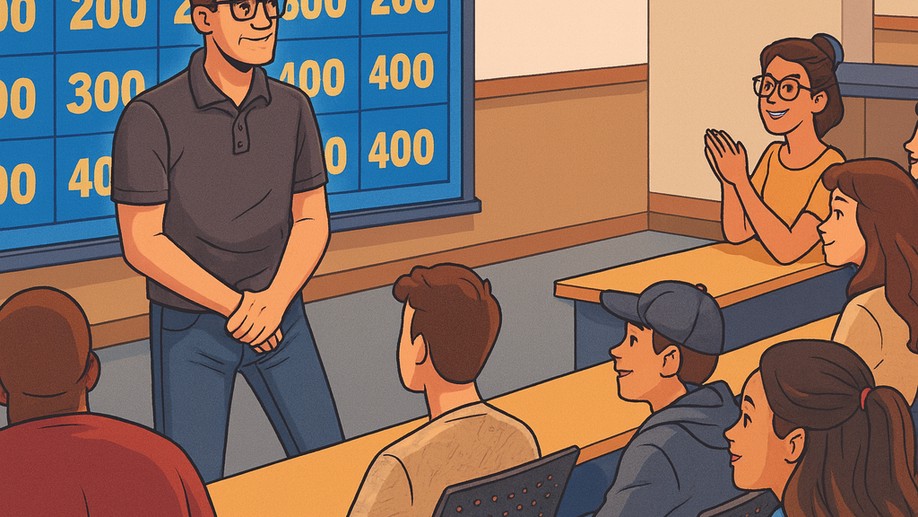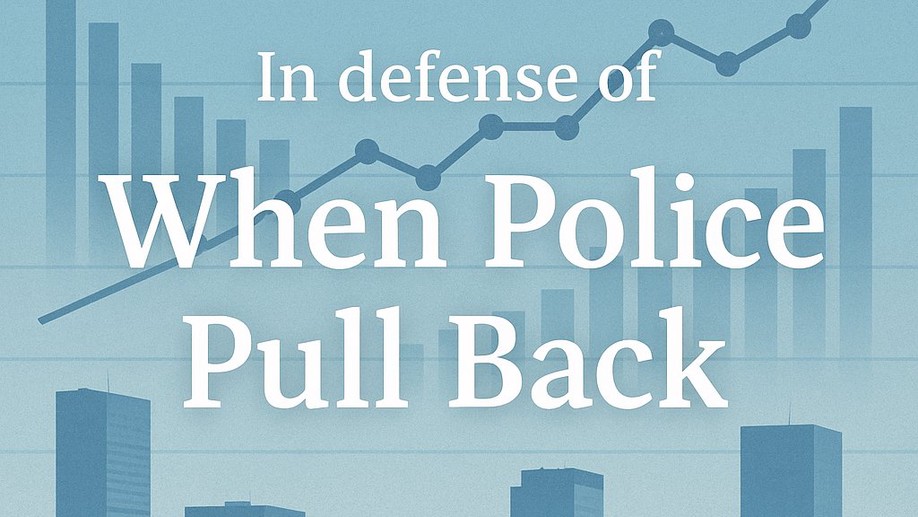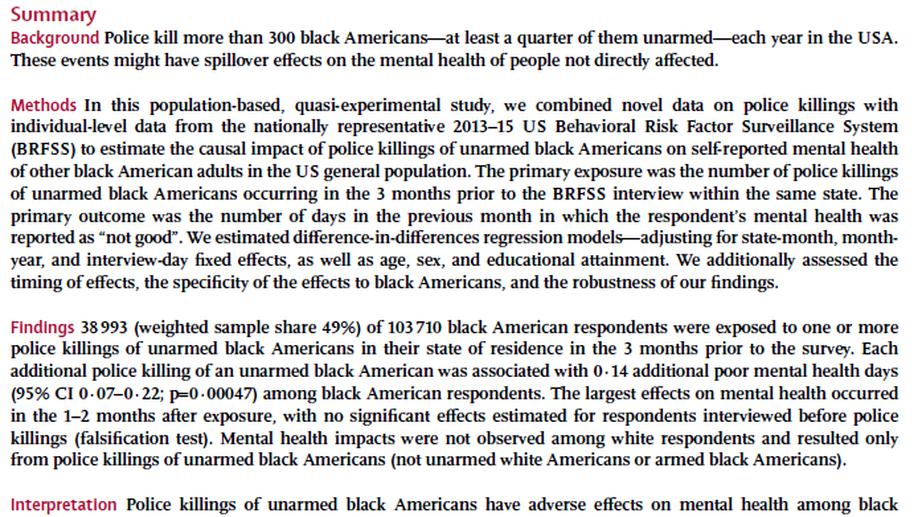
New teaching hack unlocked?
Today was the last day of the semester for my undergrad Police & Society course. In the past, I’ve always done a review for the final, in the form of Jeopardy:1
My classes range in size from 20 to 35 students, so I end up splitting them into three teams of anywhere from 6 to 12. I’ve tried doing this randomly as well as more intentionally (i.e., stratifying by performance so that each group has roughly the same number of high-performers).

Looking Back on My Peer Reviews III
I recently surpassed 200 manuscripts reviewed, and you know what that means: time to look back on how many manuscripts I’ve been asked to review, the recommendations I’ve made, and how long it generally takes me to submit after I’ve agreed.
Invitations Received I only started keeping track of this in January 2023. But since then I’ve been invited to review at least 172 manuscripts for 97 unique journals. Mostly for criminology/criminal justice, but also sociology and, increasingly, public health.

Police Killings Still Trending Upward post-Floyd
This weekend marks 5 years since George Floyd was killed by Officer Derek Chauvin of the Minneapolis Police Department. Expect to see some news stories in the coming weeks wrestling with the question of why police killings have not become any less frequent, despite the wave of reforms that were introduced in the wake of the “Defund” movement. In fact, police killings have continued on an upward trend, with 2024 witnessing the greatest number of people killed by police since 2013, according to Mapping Police Violence.

Responding to Kang-Brown (again)
Background In his latest commentary on our research note, Jacob Kang-Brown (JKB) raises six concerns (some old, some new). For what it’s worth he also makes clear his point of view regarding the “question of policing”:
From my point of view, the question of policing is not just one about reducing violent crime or gun crime, but is, rather, about understanding the harms of policing, i.e. police violence, the criminalization of poverty, and wealth-based pretrial detention (emphasis added).

Reflecting on My Promotion!
A few weeks ago I got my letter from the Senior Vice Chancellor approving my promotion to Professor (beginning next term). It’s a pretty surreal feeling. I’ve worked hard, but I’ve also benefited from a lot of good fortune along the way.
When I enrolled as an undergrad at the University of South Carolina about 20 years ago, this was definitely not the path I saw myself taking. At various times I saw myself going to law school or trying to get into federal law enforcement.

Update on the Historical OIS Data I've Been Pulling Together
Roughly 2 years ago I started building a database of fatal officer-involved shootings (OIS) at the agency-year level, going back in time as far as possible. If you’re not familiar with the OIS data landscape, here’s the gist:
Official data compiled by the FBI and NVSS have long been recognized as woefully incomplete and thus inadequate.
Unofficial data compiled by current/former journalists, activists, and researchers have become available over the last decade or so.

Our Correction for "When Police Pull Back"
BOTTOM LINE: Yes, there was a merge error in our research note, “When Police Pull Back”. However, correcting it did not render all our key findings nonsignificant as Jacob Kang-Brown claimed. In his replication, Jacob calculated our spatial lag variable differently, thereby reintroducing the endogeneity problem we designed our analysis to avoid. We are correcting, not retracting, the research note.
What happened? We made an honest mistake. We own that.

A Modified Definition of Police Violence
The other day I got a Google Scholar alert about this new article in Injury Epidemiology. It’s a descriptive study showing that 60% of police killings involve municipal departments, 29% county departments, 8% state departments, 3% federal agencies, and <1% tribal or other departments. It looked interesting (and it was!) so I downloaded the full text, and the following passage in the methods section immediately caught my eye:
MPV defines fatal police violence as “any incident where a law enforcement officer (off-duty or on-duty) applies, on a civilian, lethal force resulting in the civilian being killed whether it is considered ‘justified’ or ‘unjustified’ by the U.

Looking Back on My Peer Reviews for 2023
Near the end of each of the past few calendar years, I’ve been looking back on the peer reviews I’ve submitted - things like how often I recommended rejecting vs. revising papers, how long it took me to submit my reviews, and how often the editor’s decision was consistent with my recommendation. Today, I’m looking back at the reviews I did in 2023, and this year, I also kept track of the review invitations I declined.

Are fatal police shootings increasing?
Much is being made about an apparent increase in the use of deadly force by U.S. police officers. In January, The Guardian ran a story titled “It never stops: killings by US police reach record high in 2022”.1 And last week, The Washington Post (WAPO) ran a story titled “Fatal police shootings are still going up, and nobody knows why”. In this story, one of us (Justin) was quoted as saying “It’s hard to know if the increase is meaningful or random.

Where are they now?
A few days ago Andy Wheeler posted about career outcomes for people who earned their PhD in Criminal Justice from SUNY Albany between 2010 and 2020. He found that roughly 50% of those who graduated during this period are currently working as a university professor.
It made me curious about where all the UNO graduates have ended up.1 As of today, 97 people have earned their PhD in Criminology and Criminal Justice from the University of Nebraska Omaha.

Looking Back on My Peer Reviews for 2022
About 2 years ago I posted about my peer review “stats” and how I typically approach the review process. Today, I decided to look back at my reviews for 2022.
Altogether, I’ve now reviewed 162 manuscripts. Last year, I agreed to review 20 manuscripts for 15 different journals, which is par for the course for me. I’ve completed 19 as of today (the last is due in a few weeks). Of those 19, I recommended conditionally accepting 2 (11%), revising and resubmitting 5 (26%), and rejecting 12 (63%).

Crime Trends: Is this a Pattern or a Blip?
Recently, a couple local journalists reached out to me about an apparent surge in shootings and homicides in Omaha. My first instinct when I get those calls around this time of the year is that it’s probably seasonal variation. But maybe not. So before I schedule an interview, I like to pull the data and have a quick look, if possible. Fortunately, OPD has been posting incident-level crime data on its website since 2015.

Doing a Quick Literature Review
Awhile back I pulled together some thoughts on how to (1) find scientific research and (2) make sense of it all once you’ve found it. It’s mainly geared toward students or practitioners who need to quickly assess the evidence base on some program or policy.
I’m sharing it now in hopes it might be useful for folks teaching research methods or assigning term papers/research proposals to students who don’t have much experience doing that sort of stuff.

Reflecting on My Decision to Post Slides for My Class
This semester, for the first time since I was in grad school, I decided to post the slides I use for my undergraduate Police & Society course. My main fear was that students would (mistakenly) believe this would enable them to skip class and still do well on the exams. But what finally persuaded me was when I asked #AcademicTwitter to weigh in last December and got mostly encouragement and positive feedback from others who’ve adopted this policy.

Another Post about Police Shooting Data
I’ve been screaming this into the void on Twitter lately so I figured I’d pull all my thoughts together in a blog post.
On January 12th, ABC News published a story claiming that fatal police shootings had declined 13% in 2021 “amid calls for reform on use of force.” The story also claimed that Florida saw the biggest decrease in shootings (from 93 to 44).1
At that time, The Washington Post’s (WAPO) database was showing 888 fatal police shootings.

Waiting on the Peer Review Process
Each calendar year at my university we have to complete this thing called “Digital Measures,” where we basically list off all the stuff we did over the past 12 months. Publications, grants submitted/awarded, classes taught, service activities, media contributions…everything. It’s tedious but it is kind of cool to look back on the past year and see which goals you met (and which goals you didn’t meet).
In my first year on the tenure track, a senior faculty member advised me to keep a record of everything I did, so that I’d have all the receipts when it was time to submit my tenure materials.

Police Support for/Opposition to Various Reforms
Earlier today I was reminded of some data I’m sitting on that my colleagues and I never published anywhere. This comes from a web-based survey of police officers at a large, southern agency that we administered in 2018. The response rate was 31%.
So we asked officers to consider eight ideas that “have been proposed as ways to improve policing” and indicate the extent they supported or opposed each. We listed a hodgepodge of “reforms” including some that would (1) expand police authority, (2) restrict police authority, or (3) increase citizen oversight.

My Review History
One of the joys of the tenure track is having to keep a record of everything you do in the areas of teaching, research, and service. Since 2015, I’ve been keeping a spreadsheet of manuscripts I’ve reviewed. Specifically, the title, manuscript number, and the recommendation I provided. Around 2018, I also started keeping track of when I agreed to review each paper, when the deadline was, and when I submitted my review.

Measurement matters: Attitudinal v. behavioral survey questions
Our survey experiment suggests the wording of questions about police fairness matters.

NYC Shootings, Revisited
In my last post, I pointed out that shootings weren’t occurring less frequently in NYC in 2020 than in prior years, despite the COVID-19 pandemic. I was also careful not to jump to the conclusion that shootings had increased significantly.
That was June 3rd. Suffice it to say a lot has happened since then - including 624 additional shootings. Each of the last four years, NYC had fewer than 200 shootings from June to July.

No Significant Decline in NYC Shootings Amidst COVID-19 Pandemic
On March 1, 2020, New York City reported its first confirmed case of COVID-19. Eleven days later, Mayor de Blasio declared a state of emergency. By mid-March, the most populous city in America had essentially shut down. Schools, libraries, gyms, theaters, churches and nightclubs closed. Major sporting events and concerts were cancelled. Restaurants were limited to take-out and delivery only. Non-essential gatherings of any size were prohibited, and New Yorkers were ordered to “shelter in place.

Gun Violence Against U.S. Police Officers: Insights from a New Dataset
In a forthcoming paper in Criminology & Public Policy, Michael and I conducted an exploratory analysis of fatal and non-fatal firearm assaults on U.S police officers using six years of public data provided by the Gun Violence Archive. We adopted the following inclusion criteria:
Victim was a sworn officer employed by a local, state, or special jurisdiction law enforcement agency that routinely responds to calls for service (i.e., officers employed by town, city, or county agencies, sheriff’s departments, state agencies, tribal police, university police, transit police) Victim was on duty at the time of assault The bullet struck the victim’s person or his/her equipment (excluding vehicle) The bullet came from a real firearm (i.

Police Shooting Research and the Conditional Probability Mistake
Yesterday, Andy Wheeler posted a summary of the problems with recent studies about officer-involved shootings, including one my colleagues and I published in February 2017. As usual, Andy’s criticisms were thoughtful and spot on. And I hope I can take him up on that conference beer soon, even though he’s at a new job.
That said, I do want to push back just a little about the motivation for our paper.

New preprint: Do police killings of unarmed persons really have spillover effects?
Correcting 91 misclassified incidents renders Bor et al.’s (2018) key finding non-significant.